 W
WRear Admiral Otto Humphrey Becher, & Bar was a senior officer in the Royal Australian Navy (RAN). Born in Harvey, Western Australia, Becher entered the Royal Australian Naval College in 1922. After graduating in 1926, he was posted to a series of staff and training positions prior to specialising in gunnery.
 W
WGeneral Sir Phillip Harvey Bennett, is a retired senior officer of the Australian Army who served as Chief of the Australian Defence Force from 1984 to 1987, and later as Governor of Tasmania from 1987 to 1995.
 W
WLieutenant General Sir William Bridgeford, was a senior officer in the Australian Army. He began his military career in 1913 and fought on the Western Front during the First World War, before rising to command the 3rd Infantry Division during the Bougainville campaign in the Second World War. Later he served as the Commander in Chief of British Commonwealth Forces Korea during the Korean War. He retired from the military in 1953 and worked on the organising committee of the 1956 Melbourne Olympic Games, as well as being the director of several companies and treasurer of a returned services organisation.
 W
WGeoffrey Anthony Collins was an Australian rules football player in the Victorian Football League (VFL).
 W
WRichard (Dick) Cresswell, DFC was an officer and pilot in the Royal Australian Air Force (RAAF). He held command of No. 77 (Fighter) Squadron twice during World War II, and again during the Korean War. Cresswell was credited with being the first RAAF pilot to shoot down an enemy aircraft at night over Australian soil, the only man to serve as commanding officer of an RAAF squadron on three occasions during wartime, and the first officer to lead a jet-equipped Australian squadron in combat. His performance in Korea earned him both the Commonwealth and the US Distinguished Flying Crosses.
 W
WPeter Joseph Cundall, is an English-born Australian horticulturalist, conservationist, author, broadcaster and television personality. He currently lives in Tasmania's Tamar Valley, and until the age of 81 continued to be a presenter of the ABC TV program Gardening Australia. His last show aired on 26 July 2008. He will continue his radio show from Tasmania, his appearances at the Gardening Australia Expos and continue work on his autobiography. He was made a Member of the Order of Australia in 2007 "For service to the environment, particularly the protection of wilderness areas in Tasmania, and to horticulture as a presenter of gardening programs on television and radio."
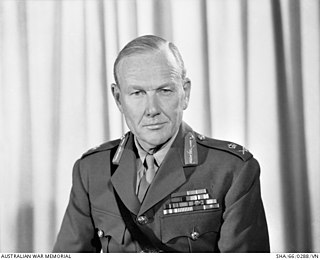 W
WLieutenant General Sir Thomas Joseph Daly, was a senior Australian Army officer, whose career culminated with his appointment as Chief of the General Staff (1966–1971).
 W
WMajor Archer Paterson Denness MC, was an Australian Army officer who served during the Second World War and the Korean War.
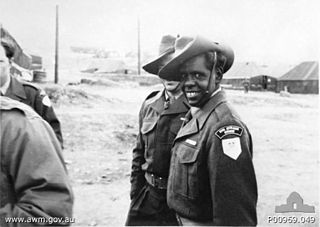 W
WSteve Dodd was an Indigenous Australian actor, notable for playing indigenous characters across seven decades of Australian film. After beginning his working life as a stockman and rodeo rider, Dodd was given his first film roles by prominent Australian actor Chips Rafferty. His career was interrupted by six years in the Australian Army during the Korean War, and limited by typecasting.
 W
WVance Drummond, was a New Zealand–born Australian pilot who fought in the Korean and Vietnam Wars. He initially saw service in the New Zealand military, but joined the Royal Australian Air Force in 1949 and graduated as a sergeant pilot in 1951. Posted to No. 77 Squadron in Korea, he flew Gloster Meteor jet fighters and earned the US Air Medal for his combat skills. He was shot down by a Mikoyan-Gurevich MiG-15 in December 1951 and imprisoned for almost two years. After returning to Australia he converted to CAC Sabre jets and in December 1961 became a flight commander with No. 75 Squadron; he subsequently led the squadron's Black Diamonds aerobatic team, and was awarded the Air Force Cross in 1965.
 W
WLieutenant General Sir Donald Beaumont Dunstan was an Australian Army officer who was Governor of South Australia from 23 April 1982 until 5 February 1991. A career officer, after joining the Army in 1940 during the Second World War, Dunstan graduated from the Royal Military College, Duntroon in 1942 and served as an infantry officer, seeing combat against the Japanese during the Bougainville Campaign in 1945. After the war, he served in a variety of appointments, including as commander of the 1st Australian Task Force during the Vietnam War. From 1977 to 1982 he held the appointment of Chief of the General Staff, before retiring from the Army having overseen a large-scale re-organisation. Afterwards, he became the longest-serving governor of South Australia. He died in 2011, at the age of 88.
 W
WColonel Ian Bruce Ferguson DSO, MC was an officer in the Australian Army who served in World War II and the Korean War.
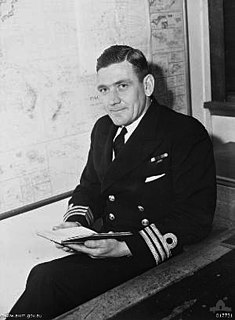 W
WRear Admiral Galfry George Ormond Gatacre, was a senior officer in the Royal Australian Navy (RAN), who also played first-class cricket. His naval career began in 1921 and lasted until his retirement in 1964, during which time he spent a number of years on secondment to the Royal Navy. He saw action in both the Second World War and the Korean War, for which he was awarded the Distinguished Service Cross and the Distinguished Service Order. He also played first-class cricket in England for the Royal Navy Cricket Club. He was made a Commander of the Order of the British Empire in 1960 and, after retirement from the navy, he became a businessman.
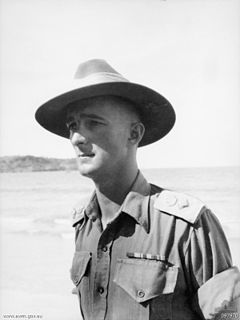 W
WLieutenant Colonel Charles Hercules Green DSO was a senior officer in the Australian Army. He served as a battalion commander in World War II, and again later during the Korean War, where he was killed in action while commanding the 3rd Battalion, Royal Australian Regiment. He was the youngest battalion commander in the Second Australian Imperial Force, and was reputed to have been one of the Australian Army's better unit-level commanders.
 W
WGeneral Sir Francis George "Frank" Hassett was an Australian general who rose to the position of Chief of the Defence Force Staff, the professional head of the Australian Defence Force, serving in this capacity from November 1975 until April 1977. Hassett joined the Australian Army in 1935 upon gaining entrance into the Royal Military College, Duntroon. Serving with distinction in the early stages of the Second World War, he was promoted to lieutenant colonel in 1942 at the age of 23, and posted as a staff officer for the remainder of the war.
 W
WAdmiral Michael Wyndham "Mike" Hudson was a senior officer in the Royal Australian Navy (RAN), particularly notable for playing an important role in the introduction of the Collins class submarines and Anzac Class frigates, and establishing two-ocean basing for ships of the RAN during his tenure as Chief of Naval Staff from 1985 to 1991.
 W
WMajor General Ronald Laurence Hughes, was a senior infantry officer in the Australian Army, seeing service during the Second World War, the Korean War and the Vietnam War. Joining the Australian Army in 1937, after graduating from the Royal Military College, Duntroon in 1939 he served in New Guinea and Borneo during the Second World War. He commanded the 3rd Battalion, Royal Australian Regiment during the static phase of the war in Korea in 1952–1953. Later, he commanded the 1st Australian Task Force in South Vietnam in 1967–68, during some of the heaviest fighting of the war experienced by the Australians. He subsequently filled a number of senior command and staff positions before retiring in 1977.
 W
WMajor General William Brian "Digger" James was an Australian soldier and military physician who served in the Australian Army during the Korean War and the Vietnam War.
 W
WGeneral Sir Arthur Leslie MacDonald, was a senior officer in the Australian Army, who served in the positions of Chief of the General Staff from 1975 to 1977, then Chief of the Defence Force Staff from 1977 to 1979; the professional head of the Australian Army and Australian Defence Force respectively.
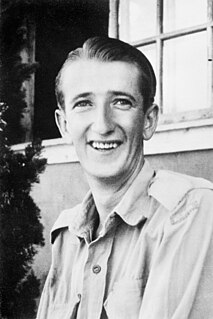 W
WHorace William Madden, GC, also known as Bill Madden, was a soldier in the Australian Army who was a posthumous recipient of the George Cross for his conduct while a prisoner of war during the Korean War.
 W
WBrigadier Denis Owen Anthony Magee was a brigadier in the Australian Army. A graduate of the Royal Military College, Duntroon, and the University of Western Australia, he served in the Second World War, Korean War and Vietnam War. He was involved in the construction of the rocket range at Woomera, the British nuclear weapon tests site at Maralinga, the Snowy Mountains Scheme, the Lavarack Barracks and the Oakey Army Aviation Centre. After retiring from the Army in 1970, he served as Director of the Sydney Cove Redevelopment Authority until 1985.
 W
WRear Admiral Sir David James Martin, was a senior officer of the Royal Australian Navy and later Governor of New South Wales. He also established the Sir David Martin Foundation to assist young Australians in crisis.
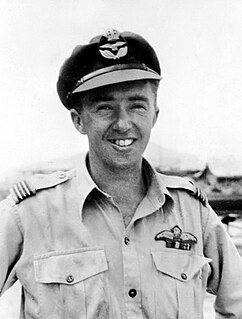 W
WAir Chief Marshal Sir Neville Patrick McNamara, was a senior commander of the Royal Australian Air Force (RAAF). He served as Chief of the Air Staff (CAS), the RAAF's highest-ranking position, from 1979 until 1982, and as Chief of the Defence Force Staff (CDFS), Australia's top military role at the time, from 1982 until 1984. He was the second RAAF officer to hold the rank of air chief marshal.
 W
WAir Marshal John William "Jake" Newham, AC is a retired senior commander of the Royal Australian Air Force (RAAF). He served as Chief of the Air Staff (CAS) from 1985 until 1987. Joining the RAAF in 1951, he flew Gloster Meteor jets with No. 77 Squadron in the Korean War in 1953, and subsequently de Havilland Vampires with No. 78 Wing on garrison duty in Malta. From 1958 to 1960, he served with No. 3 Squadron, operating CAC Sabres during the Malayan Emergency. He took charge of No. 3 Squadron in 1967, when it re-equipped with the Dassault Mirage III supersonic fighter. His commands in the early 1970s included the Aircraft Research and Development Unit, RAAF Base Laverton, and No. 82 Wing, the last-mentioned during its first years operating the long-delayed General Dynamics F-111C swing-wing bomber. He was appointed Deputy Chief of the Air Staff in March 1984, and CAS in May the following year. His tenure as CAS coincided with the release of the Dibb Report on Australia's defence capabilities, and the controversial transfer of the RAAF's battlefield helicopters to the Australian Army. Newham retired from the Air Force in July 1987 and became a company director.
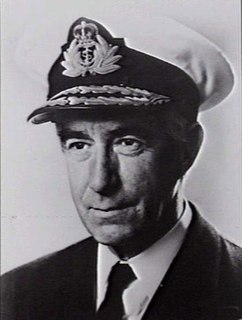 W
WVice Admiral Sir Richard Innes Peek was a senior officer in the Royal Australian Navy, who served as First Naval Member of the Australian Commonwealth Naval Board from 1970 to 1973.
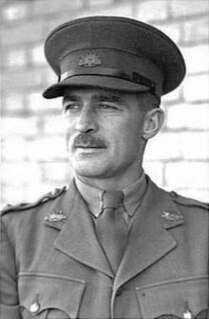 W
WLieutenant General Sir Reginald George Pollard, was a senior commander in the Australian Army. He served as Chief of the General Staff from 1960 to 1963.
 W
WCommodore Sir James Maxwell Ramsay, was a senior officer in the Royal Australian Navy and the 20th Governor of Queensland, serving from 22 April 1977 until 21 July 1985.
 W
WLieutenant General Sir Horace Clement Hugh Robertson, was a senior officer in the Australian Army who served in the First World War, the Second World War and the Korean War. He was one of the first graduates of the Royal Military College, Duntroon, to reach the ranks of major general and lieutenant general.
 W
WJonathan Rogers, was a Welsh-born sailor and an Australian recipient of the George Cross, awarded for the heroism he displayed on the night of 10 February 1964 during the sinking of HMAS Voyager.
 W
WLieutenant General Sir Sydney Fairbairn Rowell, was an Australian soldier who served as Chief of the General Staff from 17 April 1950 to 15 December 1954. As Vice Chief of the General Staff from 8 January 1946 to 16 April 1950, he played a key role in the post-Second World War reorganisation of the Army, and in the 1949 Australian coal strike. However, he is best known as the commander who was dismissed in the Kokoda Track campaign.
 W
WReginald Walter "Reg" Saunders, MBE was the first Aboriginal Australian to be commissioned as an officer in the Australian Army. He came from a military family, his forebears having served in the Boer War and the First World War. Enlisting as a soldier in 1940, he saw action during the Second World War in North Africa, Greece and Crete, before being commissioned as a lieutenant and serving as a platoon commander in New Guinea during 1944–1945. His younger brother Harry also joined the Army, and was killed in 1942 during the Kokoda Track campaign.
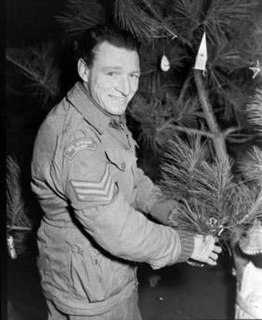 W
WRayene Stewart "Ray" Simpson, was an Australian recipient of the Victoria Cross, the highest award for gallantry "in the face of the enemy" that can be awarded to members of the British and Commonwealth armed forces. Simpson received his award for actions in Kon Tum Province, South Vietnam on 6 May 1969.
 W
WAdmiral Sir Victor Alfred Trumper Smith, was a senior officer in the Royal Australian Navy. Smith's career culminated with his appointment as Chairman, Chiefs of Staff Committee—forerunner of the role of Australia's Chief of the Defence Force—from 1970 to 1975, following an earlier term as Chief of Naval Staff from 1968 to 1970.
 W
WLouis Thomas Spence, DFC & Bar was a fighter pilot and squadron commander in the Royal Australian Air Force (RAAF). During World War II he flew with No. 3 Squadron, earning the Distinguished Flying Cross (DFC), and commanded No. 452 Squadron, receiving a Mention in Despatches. He led No. 77 Squadron in the opening months of the Korean War, and was awarded a bar to his DFC, as well as the US Legion of Merit and the US Air Medal, for his leadership.
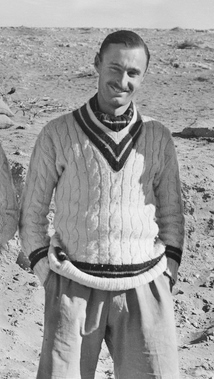 W
WAir Commodore Gordon Henry Steege, DSO, DFC was a senior officer in the Royal Australian Air Force (RAAF). He became a fighter ace in World War II, credited with eight aerial victories. Joining the RAAF in July 1937, Steege first saw action with No. 3 Squadron in the Middle East, where he was awarded the Distinguished Flying Cross after shooting down three German aircraft in a single sortie. He rose to command No. 450 Squadron in the Desert Air Force, before being posted to the South West Pacific, where he led Nos. 73 and 81 Wings. He earned the Distinguished Service Order for his "outstanding leadership", and finished the war a temporary group captain.
 W
WBrigadier Stuart Paul Weir, was a senior officer in the Australian Army, seeing service during the Second World War, Korean War, the Malayan Emergency and the Vietnam War. He subsequently commanded the 1st Australian Task Force in South Vietnam in 1969–70.
 W
WLieutenant General Sir Henry Wells, was a senior officer in the Australian Army. Serving as Chief of the General Staff from 1954 to 1958, Wells' career culminated with his appointment as the first Chairman, Chiefs of Staff Committee, a position marking him as the professional head of the Australian Military. He served in this capacity from March 1958 until March 1959, when he retired from the army.
 W
WNorman Francis Williams, served as an air gunner in Royal Australian Air Force (RAAF) bombers in the Second World War, becoming its most highly decorated non-commissioned officer. A rear gunner in a Halifax bomber, he was credited with shooting down 8 German aircraft and damaging several others, making him the RAAF's only "ace" who was not a fighter pilot.
 W
WGeneral Sir John Gordon Noel Wilton, was a senior commander in the Australian Army. He served as Chief of the General Staff (CGS), the Army's professional head, from 1963 until 1966, and as Chairman of the Chiefs of Staff Committee (CCOSC), forerunner of the role of Australia's Chief of the Defence Force, from 1966 until 1970. His eight-year tenure as senior officer of first the Army and then the Australian military spanned almost the entire period of the nation's involvement in the Vietnam War.